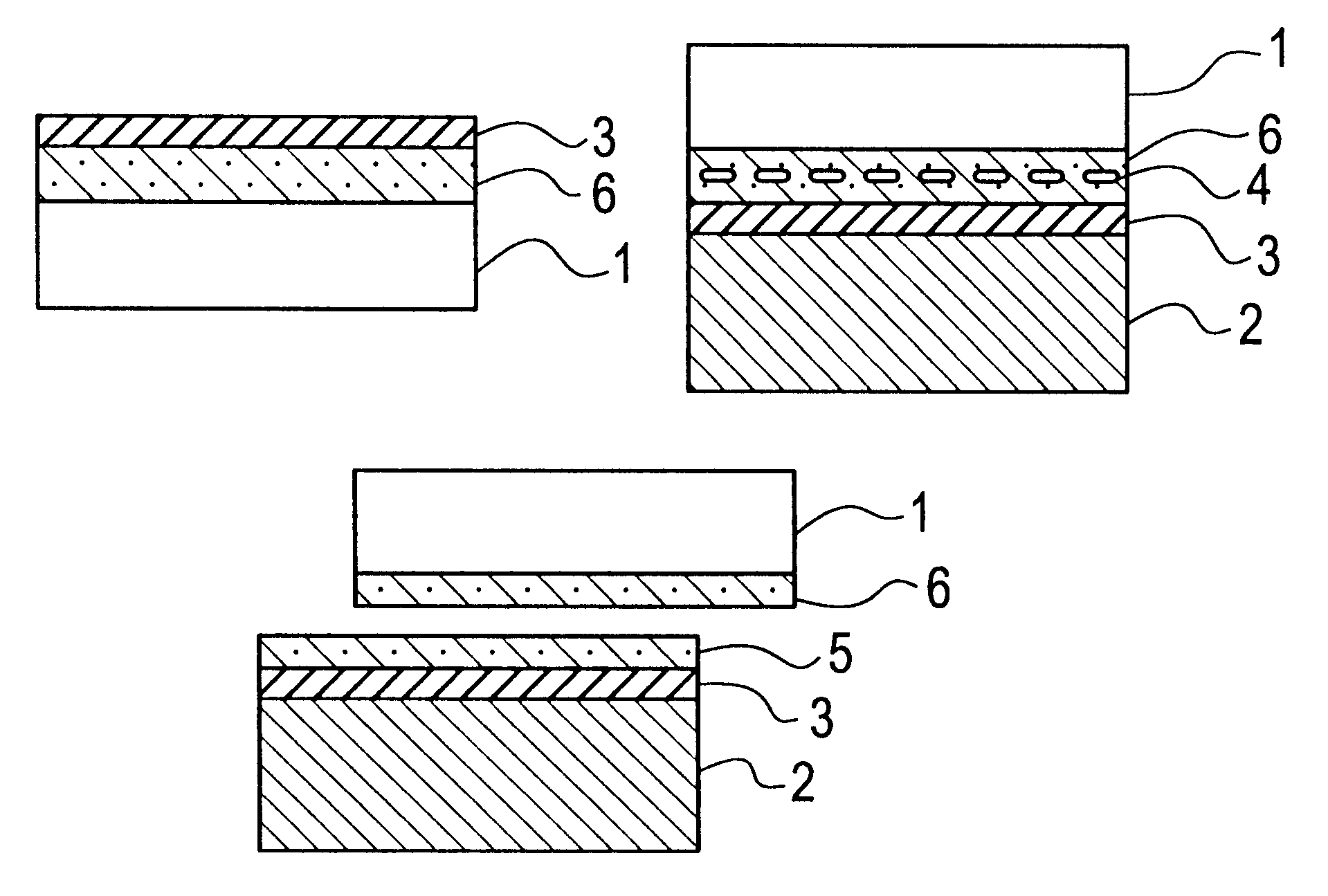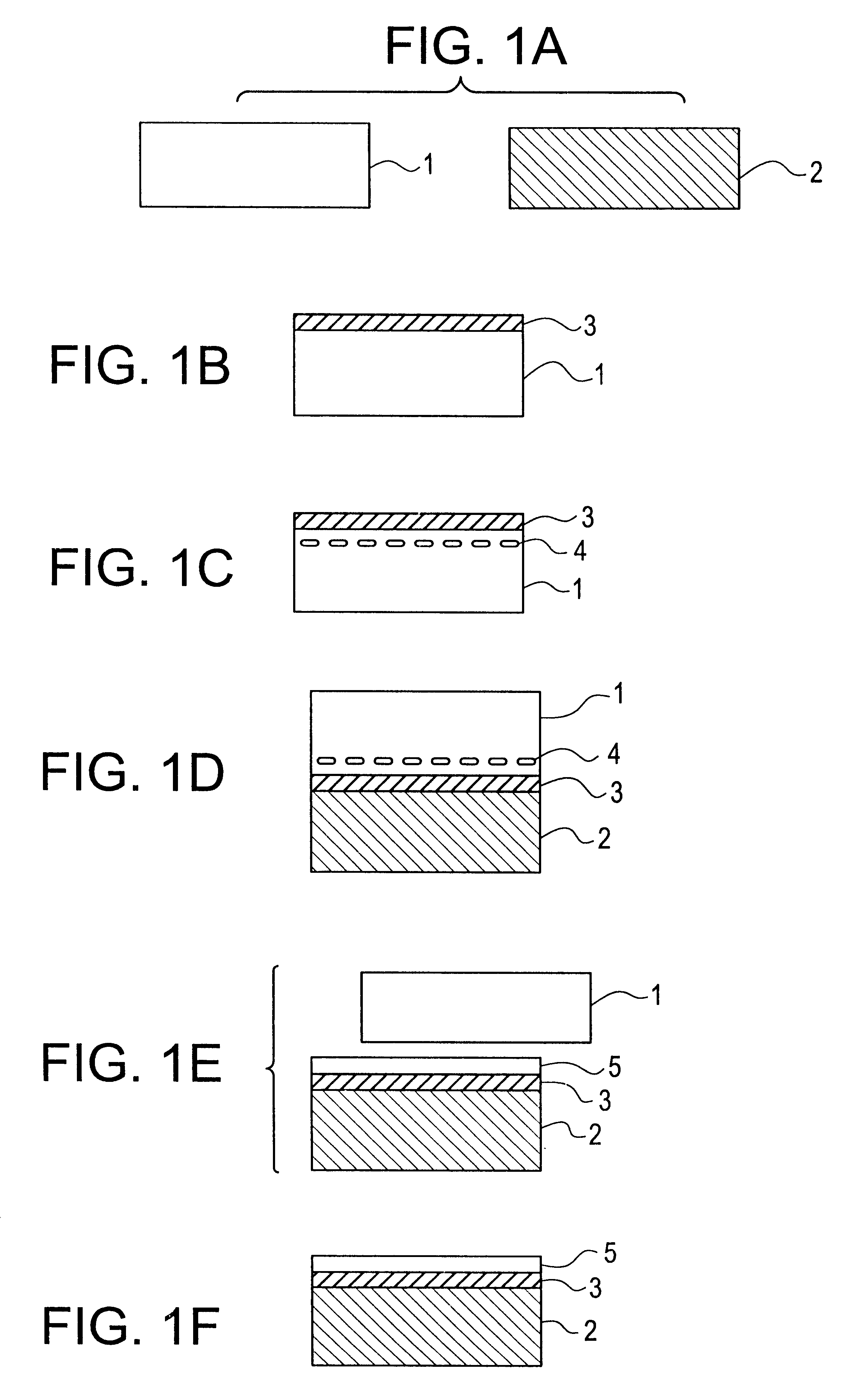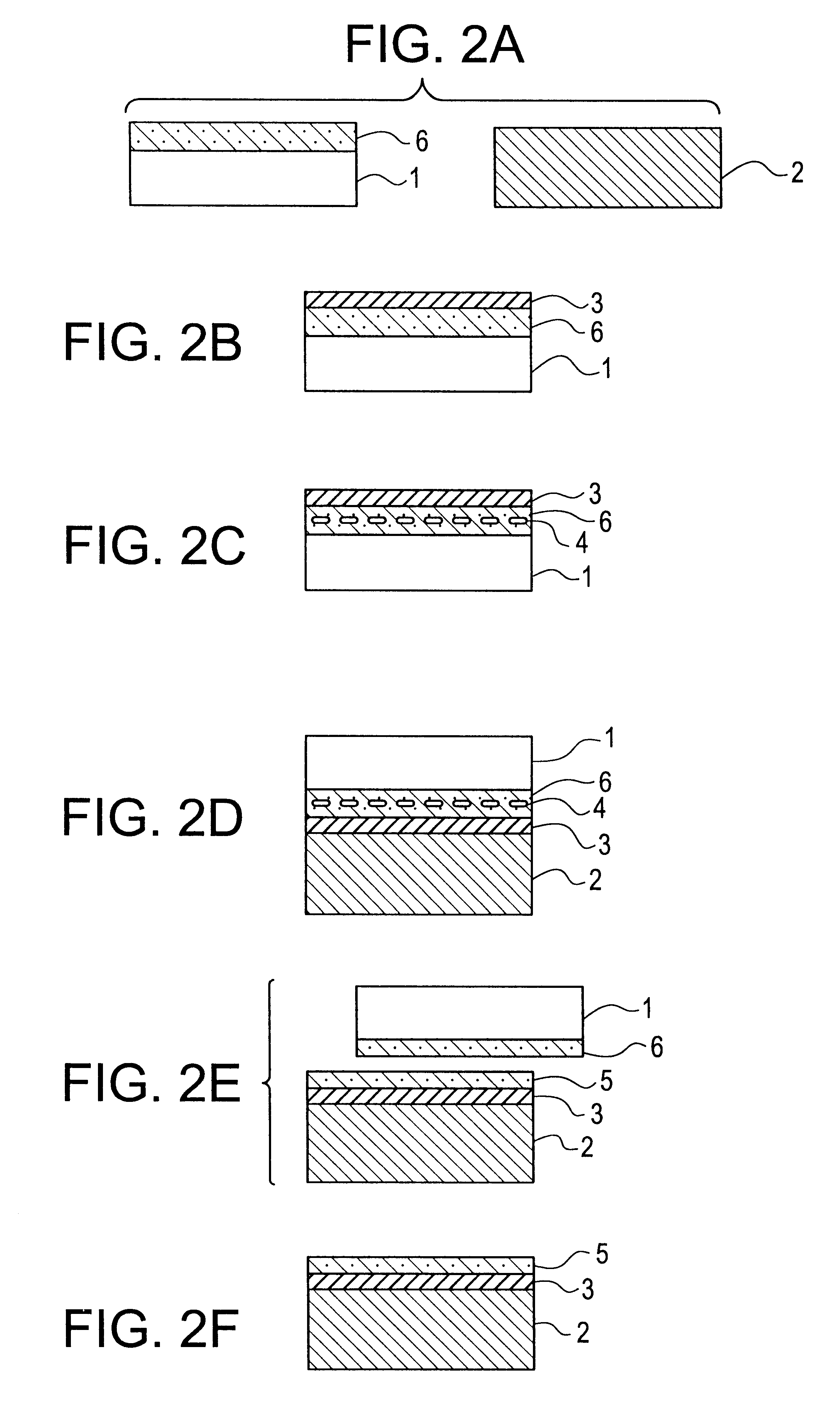Silicon-on-insulator (SOI) substrate and method of fabricating the same
a technology of silicon-on-insulator and substrate, which is applied in the direction of basic electric elements, electrical apparatus, semiconductor devices, etc., can solve the problems of affecting the characteristics of crystal defects, affecting the performance of the product, and affecting the quality of the produ
- Summary
- Abstract
- Description
- Claims
- Application Information
AI Technical Summary
Problems solved by technology
Method used
Image
Examples
example 2
In the second example, an SOI substrate was fabricated by a hydrogen ion separation process, using a silicon wafer, as the silicon substrate 1, which was fabricated by MCZ process and contained oxygen at a concentration of 5.times.10.sup.17 / cm.sup.3.
In the second example, there were prepared six different support substrates A to F, as follows.
1. Support substrate A
The support substrate A has the same structure as the silicon substrate 1. That is, the support substrate A was a silicon wafer fabricated by MCZ process and containing oxygen at a concentration of 5.times.10.sup.17 / cm.sup.3.
2. Support substrate B
The support substrate B was fabricated by applying heat treatment at 1000 degrees centigrade in O.sub.2 atmosphere to the support substrate A for thermal oxidation. Accordingly, the support substrate B was formed at a surface thereof with a 0.1 .mu.m-thick oxide film.
3-6. Support substrates C-F
The support substrates C to F were the same as the support substrates C to F having be...
second embodiment
In the second embodiment, a silicon wafer containing oxygen at a relatively high concentration is used as a silicon substrate after a region thereof close to a surface, at which an SOI active layer is to be formed, has been treated so as to reduce an oxygen concentration in the region. In the above-mentioned first embodiment, a silicon wafer containing oxygen at a relatively low concentration was used as the silicon substrate 1. However, an SOI active layer on which a device is to be fabricated occupies merely a part of a surface of a silicon substrate. Accordingly, if a region at which an SOI active layer is to be fabricated is designed to contain oxygen at a relatively low concentration, other region of the silicon substrate is allowed to contain oxygen at a relatively high concentration.
A method of fabricating an SOI substrate in accordance with the second embodiment is explained hereinbelow with reference to FIGS. 2A to 2F.
In the second embodiment, a silicon substrate 1 is first...
example 3
In the third example, there was used a silicon wafer fabricated by CZ process and containing oxygen at a concentration of as the silicon substrate 1. The silicon substrate 1 was formed at a surface thereof with the region 6 containing oxygen at a relatively low concentration. Then, an SOI substrate was fabricated by a hydrogen ion separation process.
The region 6 was formed by applying heat treatment in argon atmosphere to the silicon substrate 1 to thereby form a denuded zone. The heat treatment was carried out at 1200 degrees centigrade at atmospheric pressure in 100%-argon atmosphere for 5 hours. The thus formed region 6 had a depth of 10 .mu.m and contained oxygen at a concentration of 8.times.10.sup.17 / cm.sup.3.
In the third example, there were prepared four different support substrates A to D, as follows.
1. Support substrate A
The support substrate A was a silicon wafer fabricated by CZ process and containing oxygen at a concentration of 2.times.10.sup.18 / cm.sup.3.
2. Support su...
PUM
| Property | Measurement | Unit |
|---|---|---|
| temperature | aaaaa | aaaaa |
| temperature | aaaaa | aaaaa |
| temperature | aaaaa | aaaaa |
Abstract
Description
Claims
Application Information
 Login to View More
Login to View More - R&D
- Intellectual Property
- Life Sciences
- Materials
- Tech Scout
- Unparalleled Data Quality
- Higher Quality Content
- 60% Fewer Hallucinations
Browse by: Latest US Patents, China's latest patents, Technical Efficacy Thesaurus, Application Domain, Technology Topic, Popular Technical Reports.
© 2025 PatSnap. All rights reserved.Legal|Privacy policy|Modern Slavery Act Transparency Statement|Sitemap|About US| Contact US: help@patsnap.com



